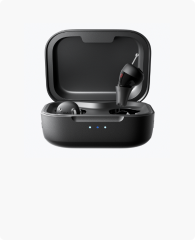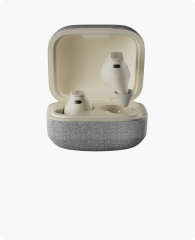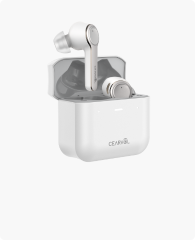Hearing loss is a widespread concern that affects millions of people, particularly as they age. It can range from mild to profound and can significantly impact daily life. Understanding the different types of hearing loss, their symptoms, and available treatments is crucial for managing this condition effectively. In this article, we will explore the most common types of hearing loss, their causes, and how they can be treated. We'll also highlight various solutions, such as hearing aids, that can improve the quality of life for those experiencing hearing loss.
🚀 Navigate This Post
You may also be interested in:
- Ringing in Ears? Cost and Value of Best OTC Hearing Aids for Tinnitus
- 7 Great Tips for First Time Hearing Aid Users
- Comprehensive Guide: Everything You Need to Know about Hearing Aids
Part 1: What is Hearing Loss?
Hearing loss refers to a reduced ability to hear sounds, ranging from mild to profound. It can affect one or both ears and impact daily communication. There are different types of hearing loss, including sensorineural hearing loss, conductive hearing loss, and mixed hearing loss. Each type has distinct causes and treatments.
For individuals experiencing hearing difficulties, Cearvol hearing aids provide an effective solution. Their advanced technology enhances sound clarity, making it easier to communicate in different environments.

Diamond X1 - Best Hearing Aids with Bluetooth
Newcomer Price
$249.99 $309.99
- ✔ Adaptive sound modes for clear hearing.
- ✔ Bluetooth for calls & streaming.
- ✔ App-controlled, customizable adjustments.
- ✔ Rechargeable & fast charging.
- ✔ Ideal for mild to moderate hearing loss.
Part 2: Is Hearing Loss Common?
Hearing loss is a prevalent condition, especially among older adults. In fact, the most common type of hearing loss in older adults is sensorineural hearing loss, which results from damage to the inner ear or auditory nerve. Studies show that nearly 15% of American adults report some degree of hearing difficulty.
Part 3: Most Common Types of Hearing Loss
Understanding the different types of hearing loss is essential for finding the right treatment. The three primary types include:
1. Sensorineural Hearing Loss
This is the most prevalent form and occurs due to damage to the inner ear or auditory nerve. Sudden sensorineural hearing loss is a medical emergency that requires prompt treatment.
2. Conductive Hearing Loss
Conductive hearing loss results from obstructions or damage in the middle or outer ear, preventing sound from reaching the inner ear.

3. Mixed Hearing Loss
A combination of sensorineural and conductive hearing loss, affecting both the outer/middle and inner ear.
To explore more about hearing aids, check out everything about hearing aids.
Hearing loss can also occur suddenly, known as sudden hearing loss, which requires immediate medical attention. If you’re wondering, "What type of hearing loss do I have?", consulting an audiologist for a professional diagnosis is the best approach.
Part 4: Configuration of Hearing Loss
When you undergo a hearing test, the audiologist will use an audiogram to track your hearing ability. The audiogram displays the volume levels at different frequencies required for you to hear the sounds. Frequency refers to the pitch or tone of the sound.
The graph on your audiogram will form a shape that represents your hearing loss configuration, which describes the nature of your hearing loss. There are several ways to characterize hearing loss:
- High-frequency vs. low-frequency: This distinction refers to whether you hear higher-pitched or lower-pitched sounds more clearly.
- Bilateral vs. unilateral: Bilateral hearing loss means it's present in both ears, while unilateral hearing loss is in just one ear.
- Symmetrical vs. asymmetrical: Symmetrical refers to hearing loss with the same severity and pattern in both ears, while asymmetrical means the loss differs in each ear.
- Progressive vs. sudden hearing loss: Progressive hearing loss worsens over time, while sudden hearing loss occurs quickly. If you experience sudden loss, you should consult a doctor immediately.
- Fluctuating vs. stable hearing loss: Fluctuating hearing loss varies, sometimes improving or worsening, whereas stable hearing loss remains unchanged.
Part 5: Different Degrees of Hearing Loss
Hearing loss is categorized into different degrees, which can range from mild to profound. Understanding the degree of hearing loss is essential for selecting the right hearing aid, ensuring both comfort and improved hearing quality. Here's an overview of the common degrees of hearing loss:
1. Mild Hearing Loss
Individuals with mild hearing loss may have difficulty hearing soft sounds or understanding speech in noisy environments. They can often hear well in quiet settings but may struggle with conversations in louder spaces. For people with mild hearing loss, affordable Bluetooth hearing aids can be a great option. These devices provide enhanced sound clarity and connectivity with smartphones and other Bluetooth-enabled devices, making it easier to engage in conversations and enjoy media.
2. Moderate Hearing Loss
Moderate hearing loss makes it challenging to hear normal conversation levels. Speech often sounds muffled, and people may have trouble distinguishing words from background noise.

3. Severe Hearing Loss
Those with severe hearing loss can hear very little or none of the sounds in normal conversation. Sounds must be amplified significantly for them to hear clearly.
4. Profound Hearing Loss
Profound hearing loss is the most severe form, where individuals may only hear very loud sounds or none at all.
Part 6: Hearing Loss: Symptoms and Causes
Hearing loss can develop gradually over time or occur suddenly, affecting people of all ages. Recognizing the symptoms early and understanding the potential causes can help individuals take proactive steps toward better hearing health.
1. Common Symptoms of Hearing Loss
Hearing loss manifests in different ways, depending on its severity and underlying cause. Some of the most common symptoms include:
- Difficulty understanding conversations – Especially in noisy environments or when multiple people are speaking.
- Frequently asking others to repeat themselves – Struggling to catch certain words or sounds.
- Turning up the volume on electronic devices – Needing higher volumes on TVs, phones, or radios.

- Muffled or distorted sounds – Speech and other sounds may seem unclear or distant.
- Ringing in the ears (tinnitus) – Many individuals with hearing loss experience persistent ringing, buzzing, or hissing sounds.
- Avoiding social situations – Difficulty hearing can lead to frustration, embarrassment, or withdrawal from conversations.
2. Common Causes of Hearing Loss
Hearing loss can result from various factors, including aging, medical conditions, and environmental exposure. The primary causes include:
- Aging (Presbycusis) – Age-related hearing loss is one of the most common causes, gradually affecting the ability to hear high-pitched sounds.
- Noise Exposure – Prolonged exposure to loud environments (e.g., concerts, heavy machinery, or headphones at high volume) can damage the inner ear.
- Earwax Buildup – Excess earwax can block the ear canal, causing temporary hearing loss.
- Ear Infections – Infections can lead to fluid buildup in the middle ear, affecting hearing.
- Ototoxic Medications – Certain drugs, including some antibiotics and chemotherapy treatments, can cause hearing damage.
- Genetic Factors – Some individuals inherit a predisposition to hearing loss.
- Injuries or Illnesses – Head trauma, strokes, or diseases like diabetes can contribute to hearing impairment.
Identifying hearing loss symptoms early and understanding its causes can help individuals seek timely solutions. For those experiencing mild to moderate hearing loss, best OTC hearing aids can provide enhanced sound clarity and wireless connectivity, making daily conversations and media enjoyment more accessible.
Part 7: Hearing Loss: Treatment and Prevention
Hearing loss can impact daily life, but with the right treatment and preventative measures, individuals can maintain better hearing health. While some forms of hearing loss are permanent, many cases can be managed with appropriate interventions.
1. Treatment Options for Hearing Loss
The best treatment for hearing loss depends on its cause and severity. Some of the most common solutions include:
- Hearing Aids – For individuals with mild to moderate hearing loss, affordable Bluetooth hearing aids offer an excellent solution. These devices enhance sound clarity while providing wireless connectivity to smartphones, TVs, and other digital devices.
- Medical or Surgical Interventions – Some cases of hearing loss, such as those caused by infections, earwax buildup, or structural issues, may be treatable with medication or minor surgery. Or you can check this guide to remove earwax safely at home.

- Cochlear Implants – For severe or profound hearing loss, cochlear implants can bypass damaged parts of the ear and directly stimulate the auditory nerve.
- Assistive Listening Devices (ALDs) – ALDs, such as amplified phones and FM systems, help improve hearing in specific environments, like classrooms or public spaces.
2. Preventing Hearing Loss
While not all hearing loss can be prevented, taking proactive measures can help protect your hearing for the long term:
- Limit Exposure to Loud Noises – Avoid prolonged exposure to loud environments, and use ear protection (earplugs or earmuffs) when necessary.
- Keep the Volume at Safe Levels – Lower the volume on headphones, televisions, and other audio devices to prevent noise-induced damage.
- Practice Good Ear Hygiene – Avoid inserting objects like cotton swabs into the ear canal, as they can push earwax deeper and cause blockages.
- Stay Healthy – Conditions like diabetes and high blood pressure can affect hearing, so maintaining overall health is important.
- Get Regular Hearing Checkups – Routine hearing tests can help detect early signs of hearing loss, allowing for timely intervention.
Conclusion
Hearing loss is a prevalent and complex condition that affects millions of people worldwide. From mild to profound, it can impact communication, social interactions, and overall quality of life. Understanding the different types of hearing loss, their symptoms, causes, and available treatment options is essential for managing this condition effectively.
While some forms of hearing loss are irreversible, solutions such as hearing aids can significantly enhance hearing ability and improve daily experiences. By taking proactive steps—such as protecting your ears from loud noise, maintaining good ear health, and seeking professional evaluations—you can preserve your hearing for years to come.








Leave a comment
All comments are moderated before being published.
This site is protected by hCaptcha and the hCaptcha Privacy Policy and Terms of Service apply.